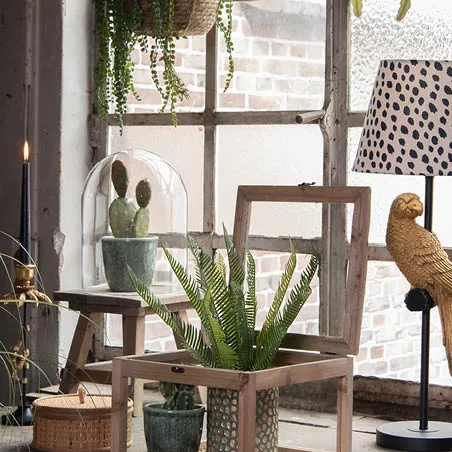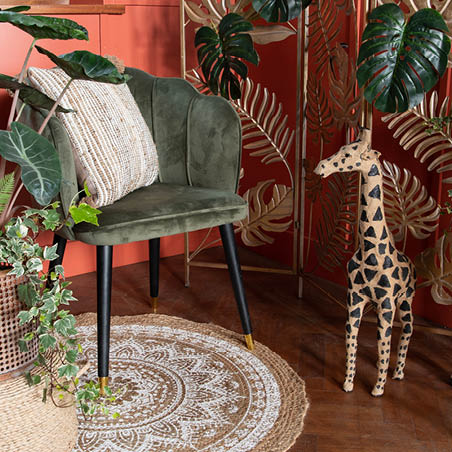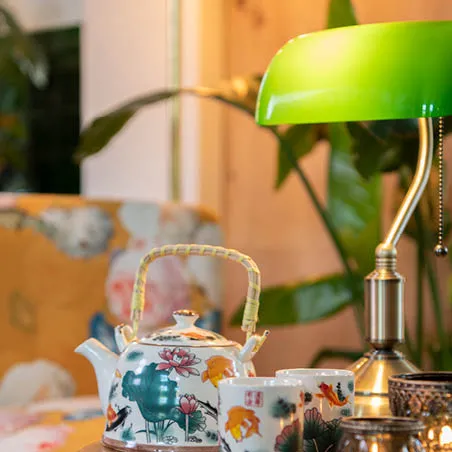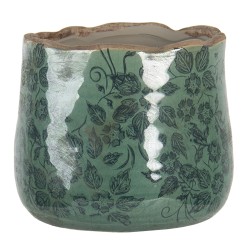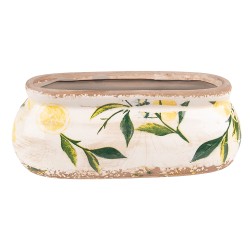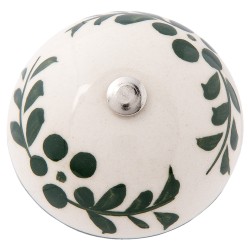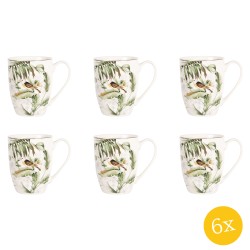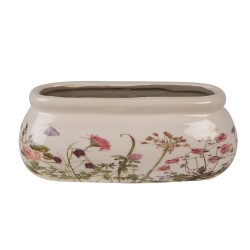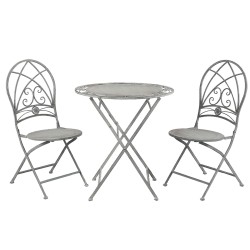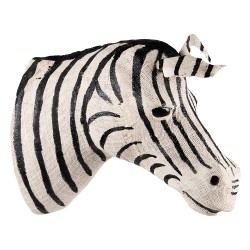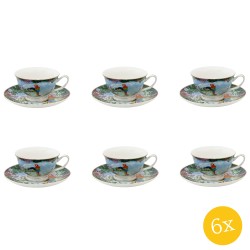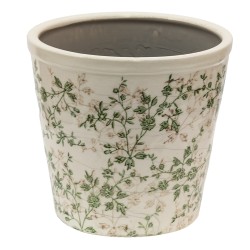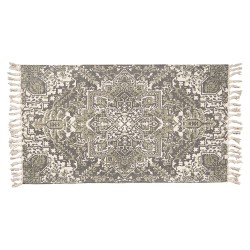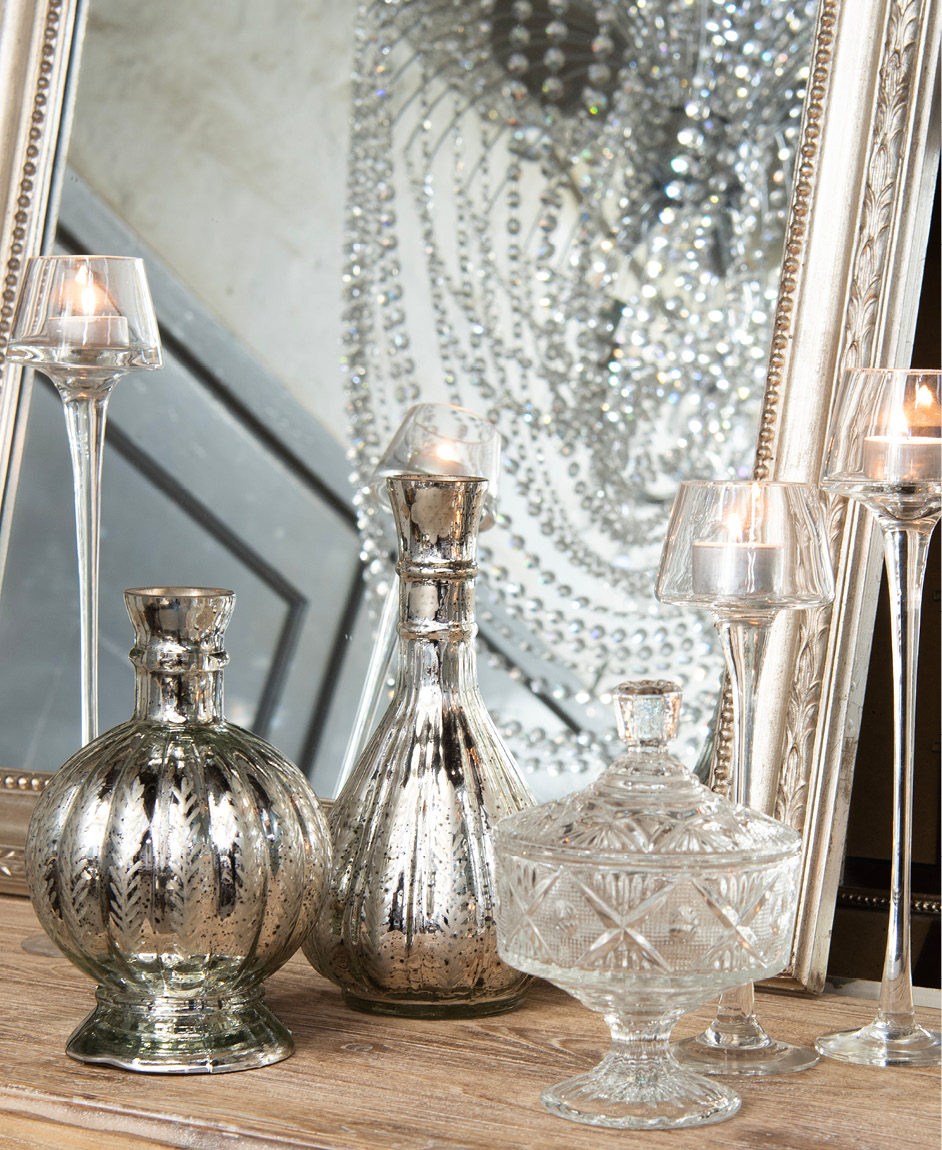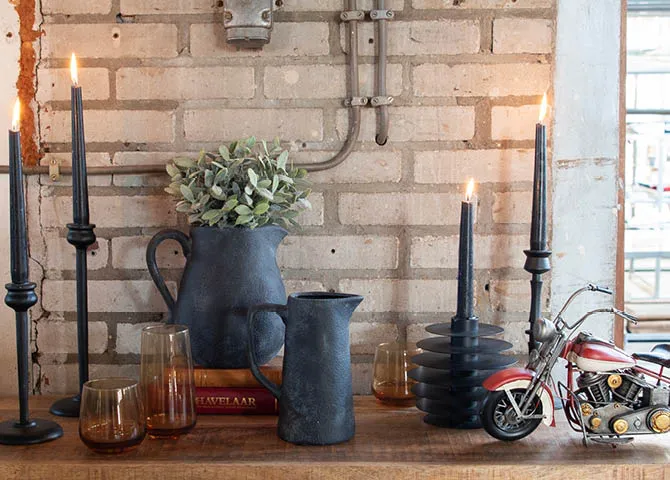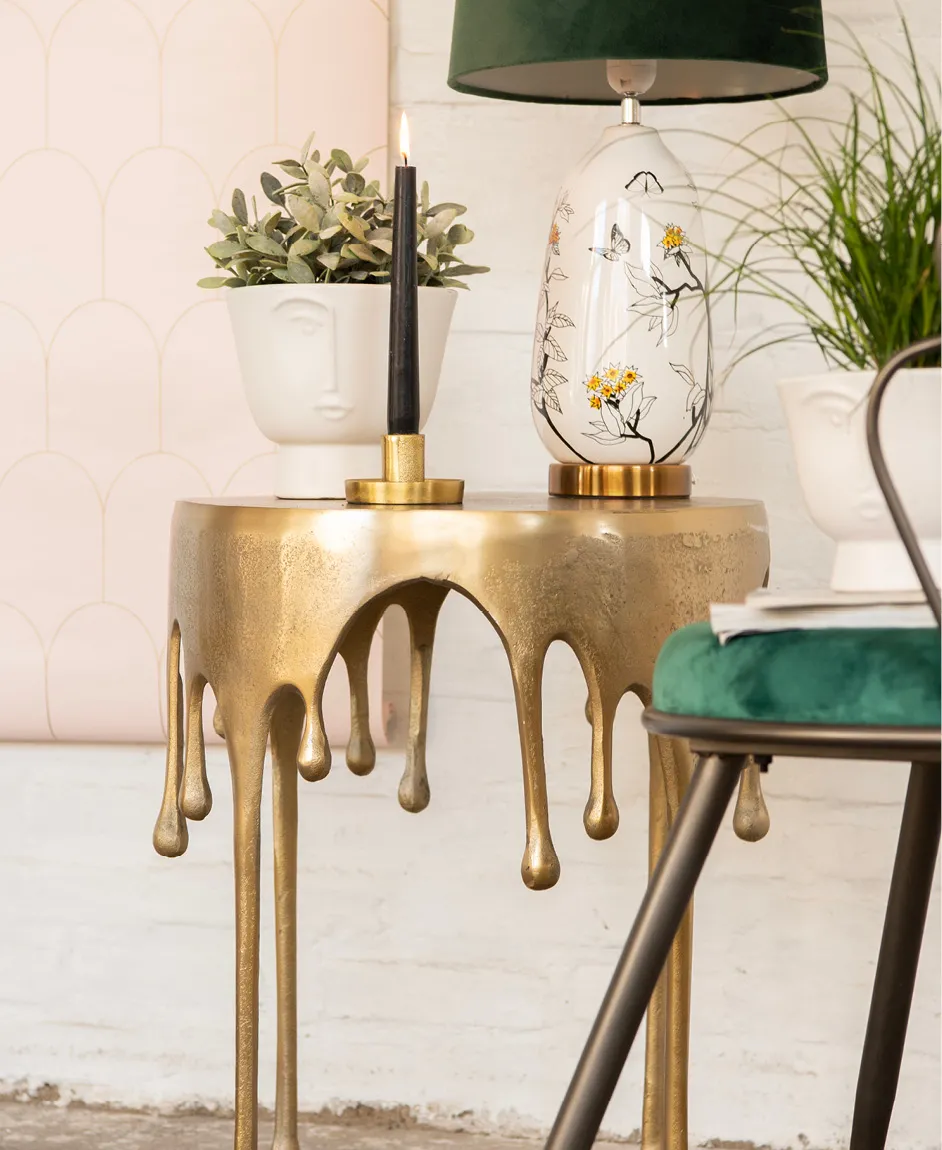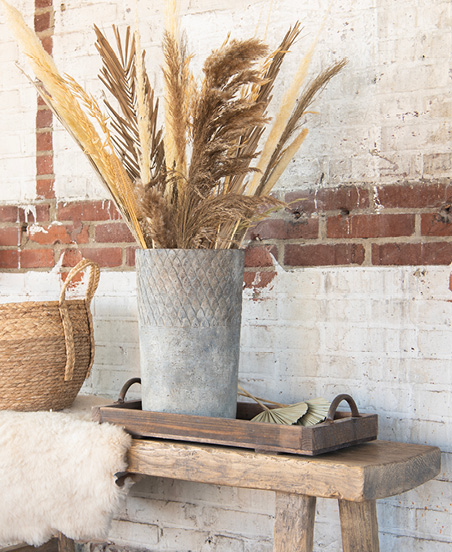This is how you create an botanic interior!
This is how you create a botanical interior!
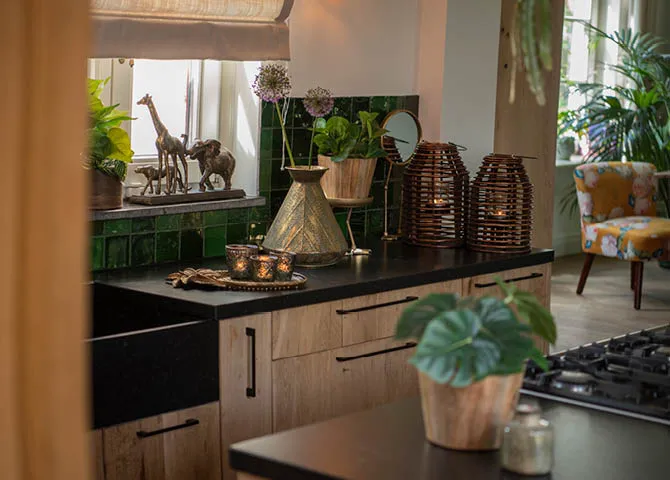
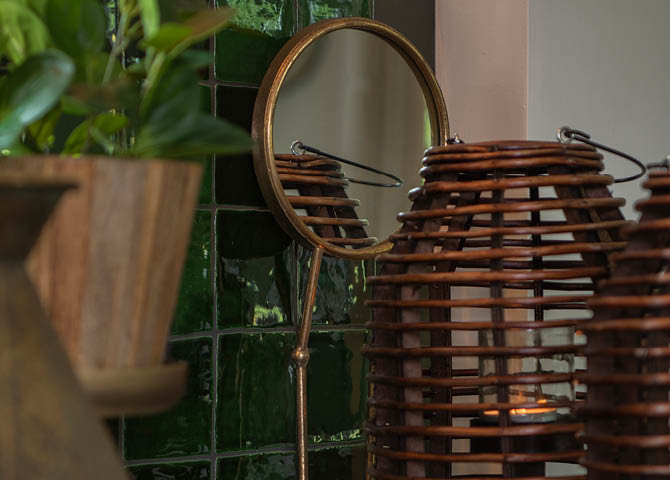
Bringing nature into your interior is like creating a green oasis within your living space. It goes beyond decoration; it's a way to embrace the soothing ambiance of plants and natural materials. Adding plants and incorporating natural elements like wood and stone not only provides visual appeal but also imparts a sense of serenity and well-being in your home. It's an invitation to escape the daily hustle and bustle and relish in the calming power of nature within the confines of your own four walls.
Are plants important in a botanical interior?
Choosing a diverse mix of plants is the foundation for creating an engaging and attractive botanical interior. By selecting plants with different textures, shapes, and colors, you add visual interest and depth to your space, giving it a lively and dynamic appearance.
Large indoor plants like Monstera deliciosa, Areca palm, and Ficus lyrata are excellent choices for making a statement and creating a tropical atmosphere. These plants can be used to fill empty corners, placed behind furniture, or used as dividers between different parts of a room.
Hanging plants such as Pothos, String of Pearls, and Ceropegia woodii (String of Hearts) add a vertical element and are ideal for placing in hanging baskets, on bookshelves, or as climbing plants along a wall or window. These plants contribute to creating a lush, green environment and are perfect for small spaces where floor space is limited.
Small potted plants like succulents, ferns, and various types of Calathea are great for placing on windowsills, side tables, and shelves. These plants add subtle green accents and are ideal for creating a cozy and intimate atmosphere.
What type of furniture should I choose for a botanical interior?
Playing with height and layers is essential to create a dynamic and engaging botanical interior. Start by varying the height of your plants using plant stands, bookshelves, hanging baskets, and window sills. Place larger plants on the floor while smaller plants and hanging plants can be positioned at different heights. This not only creates a sense of depth but also makes your interior visually more interesting and stimulating.
When adding height and layers to your interior, you can also utilize furniture pieces such as ladder shelves, étagères, and room dividers with shelves. These pieces offer additional space to display your plants and can also serve as room dividers to create cozy and intimate corners.
Invest in high-quality furniture and decorations that are environmentally friendly and built to last. This is not only better for the planet but also ensures that your botanical interior has a timeless appeal that will last for years, enriching your living space with natural beauty and comfort.
What type of lighting works well within a botanical interior?
Opt for lighting that is warm and diffuse, such as dimmable floor lamps, table lamps, and string lights with a soft glow. These softer light sources cast a pleasant glow over your botanical arrangements and create a subtle interplay of light and shadow, contributing to the serene atmosphere. The warm light also accentuates the green tones of your plants, making them stand out even more.
The use of dimmable lighting allows you to adjust the intensity for different times of the day and moods. You can brighten the light for reading or working and dim it for a relaxing evening.
Additionally, string lights with a soft glow can add a magical and playful touch to your botanical space. They can be wrapped around plant stands or hung discreetly in a corner, creating an enchanting atmosphere reminiscent of a peaceful garden at sunset.
In summary, lighting in a botanical interior is not only functional but also an artistic choice that transforms the entire experience. The right light elevates the natural beauty of your plants and contributes to the tranquility and coziness of your green oasis.
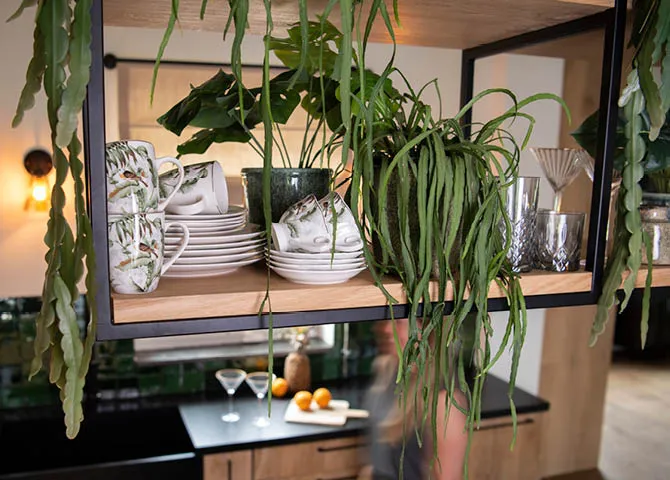
Use of color in a botanical interior
What colors can I use in a botanical interior?
Color plays a crucial role in creating an inviting and captivating botanical interior. Starting with a base of earthy tones and then adding vibrant color accents creates a lively and dynamic atmosphere that reflects the beauty of nature.
Use natural colors like various shades of green, brown, terracotta, and beige to establish a warm and soothing foundation. These colors can be applied to walls, furniture, and textiles, enhancing the natural materials and plants in your interior.
Next, introduce accents in bright colors inspired by flowers, tropical birds, and exotic landscapes. Think of colors like bright pink, yellow, blue, and orange, which create a cheerful and energetic ambiance. These accent colors can be incorporated through cushions, paintings, ceramics, and other decorative accessories.
To achieve the best result, it's important to strike a good balance between the earthy base colors and the vibrant accent colors. For example, you can opt for a neutral wall color like a soft green or beige and then add bright color accents through artwork, cushions, and decorative objects.
Experiment with the use of color to define different zones within your interior as well. This can be achieved by applying different colors or shades to different walls or by using colorful furniture and accessories to delineate specific areas in your living space.
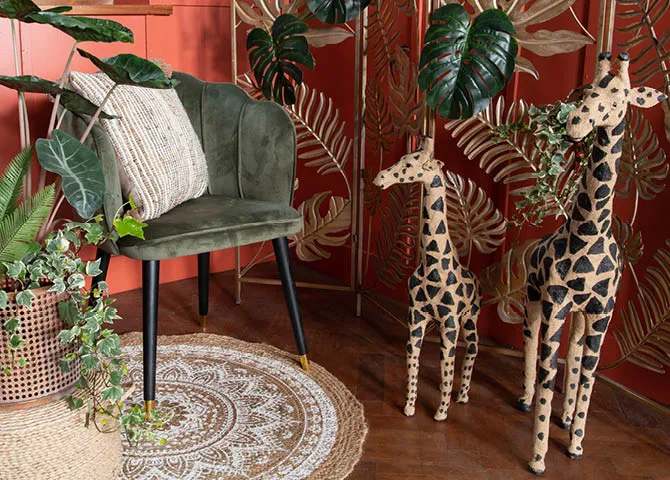
Use of materials in a botanical interior
What materials can I use in a botanical interior?
Using natural materials in your botanical interior helps create an authentic and organic atmosphere, strengthening the connection to nature. By choosing furniture and decorations made from materials such as wood, rattan, wicker, linen, and cotton, you add warmth, texture, and character to your living space.
Wooden furniture, such as coffee tables, dining tables, chairs, and cabinets, provides a beautiful foundation for your botanical interior. Opt for solid wood or veneer with a natural finish to emphasize the rich tones and unique patterns of the wood. Reclaimed or recycled wooden furniture can also add an interesting and sustainable element to your interior.
Rattan and wicker furniture are great additions to a botanical interior due to their light and airy appearance and natural texture. Use rattan chairs, ottomans, side tables, or even a rattan bed frame to create a tropical and relaxed atmosphere.
Linen and cotton fabrics are ideal for upholstering furniture, making cushions, throws, and curtains, and draping beds or dining tables. Choose fabrics in soft, earthy colors like beige, sand, olive green, and terracotta to bring harmony and tranquility to your botanical interior. Natural fibers such as jute, sisal, and seagrass can be used for rugs and baskets, adding extra texture and warmth to your space.
Additionally, you can also incorporate natural materials into decorative objects and accessories, such as wooden bowls, stone figurines, ceramic vases, and seashells. These materials will not only enhance the organic look of your interior but also help create a sense of cohesion and unity between your furniture, plants, and decorations.
botanical interior
Looking for extra inspiration? Explore our range of beautiful furniture, lighting, and home accessories that are perfect for creating a botanical interior style in your home.
also read:
Not finished reading yet? Then read these blogs for more inspiration!

 Home deco
Home deco
 Lighting
Lighting
 Furniture
Furniture
 Kitchen
Kitchen
 Textile
Textile
 Bed & Bath
Bed & Bath
 Garden & Animal
Garden & Animal
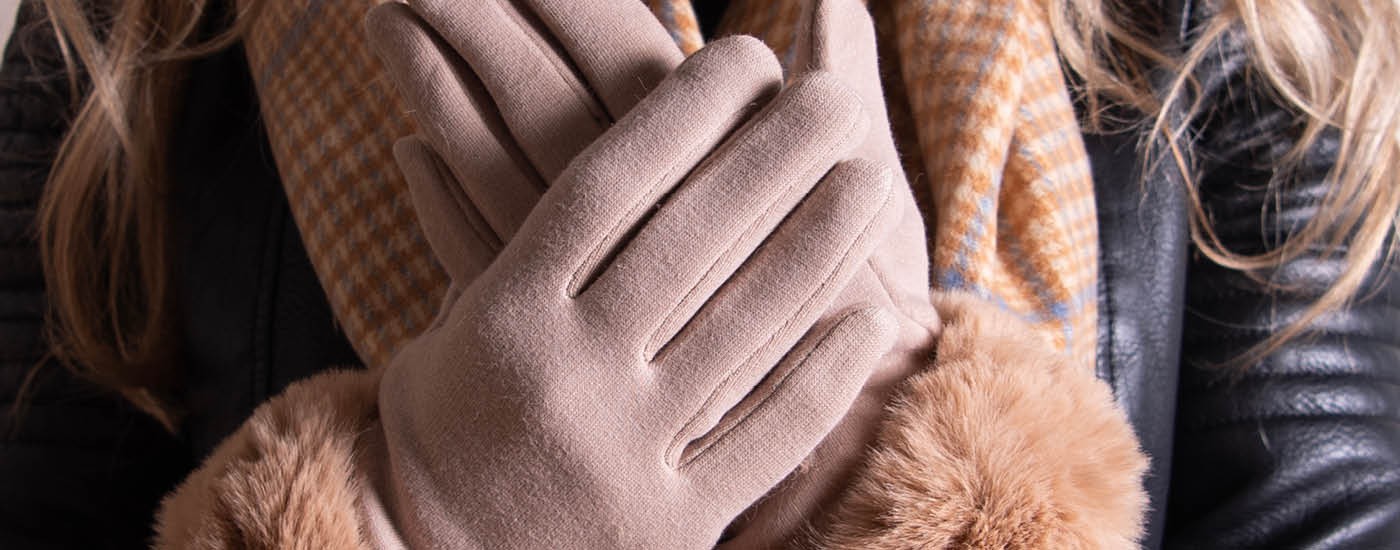 Fashion
Fashion
 Holidays
Holidays
 Sale
Sale
 Accessories
Accessories
 Planters and accessories
Planters and accessories
 Photo frames
Photo frames
 Clocks
Clocks
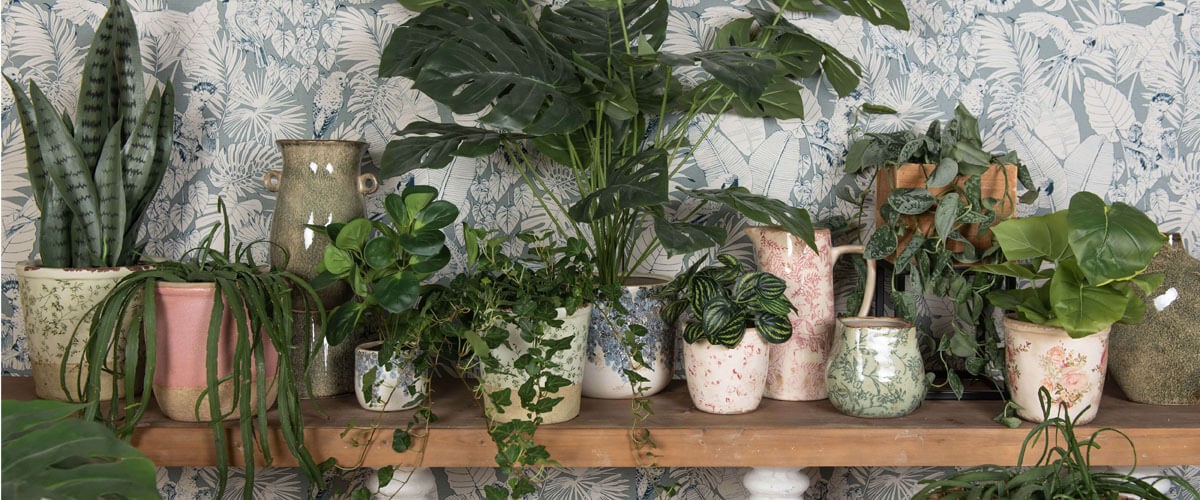 Artificial flowers and plants
Artificial flowers and plants
 Candle holders
Candle holders
 Storage & organization
Storage & organization
 Wall decoration
Wall decoration
 Book & Desk
Book & Desk
 Entrance & Wardrobe
Entrance & Wardrobe
 Aroma diffusers
Aroma diffusers
 Sculptures and statues
Sculptures and statues
 Decorative Ornaments
Decorative Ornaments
 Decorative jugs
Decorative jugs
 Decorative bowls
Decorative bowls
 Autumn decoration
Autumn decoration
 Bell jars
Bell jars
 Wreaths
Wreaths
 Mirrors
Mirrors
 Vases and bottles
Vases and bottles
 Money boxes and piggy banks
Money boxes and piggy banks
 Globes
Globes
 Table clocks
Table clocks
 Wall clocks
Wall clocks
 Candlestick and candelabras
Candlestick and candelabras
 Lanterns and wind lights
Lanterns and wind lights
 Tealight holders
Tealight holders
 LED Lanterns
LED Lanterns
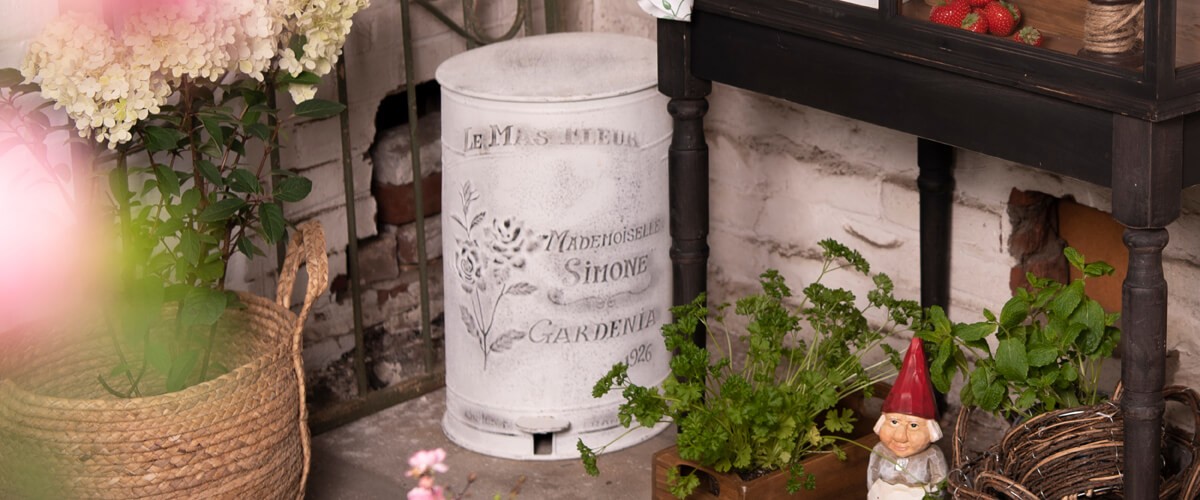 Tin boxes and canisters
Tin boxes and canisters
 Boxes
Boxes
 Baskets
Baskets
 Glass racks and wine racks
Glass racks and wine racks
 Crates
Crates
 Storage trunks
Storage trunks
 Rubbish bins
Rubbish bins
 Wall accents
Wall accents
 Wall paintings
Wall paintings
 Text signs and metal signs
Text signs and metal signs
 Wall hangings
Wall hangings
 Book stands and bookends
Book stands and bookends
 Desk accessories
Desk accessories
 Chalkboards and magnetic boards
Chalkboards and magnetic boards
 Calendars and notebooks
Calendars and notebooks
 Magnets
Magnets
 Magazine holders
Magazine holders
 Gift decorations
Gift decorations
 Post boxes and mailboxes
Post boxes and mailboxes
 House numbers and letters
House numbers and letters
 Chimes and doorbells
Chimes and doorbells
 Door knobs and pulls
Door knobs and pulls
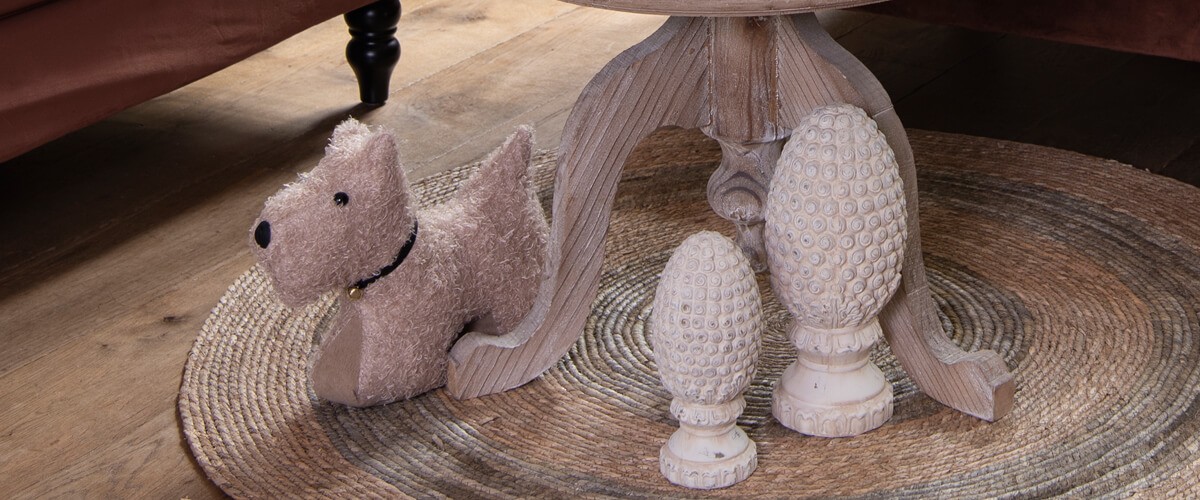 Door stops
Door stops
 Doormats
Doormats
 Coat racks and hooks
Coat racks and hooks
 Umbrella stands
Umbrella stands
 Key holders
Key holders
 Pendant lamps
Pendant lamps
 Table lamps
Table lamps
 Floor lamps
Floor lamps
 Wall lights
Wall lights
 Chandeliers
Chandeliers
 Lamp shades
Lamp shades
 Lamp bases
Lamp bases
 Tiffany stained glass panels
Tiffany stained glass panels
 Tiffany Lighting
Tiffany Lighting
 Tiffany pendant lamps
Tiffany pendant lamps
 Tiffany lamp shades
Tiffany lamp shades
 Tiffany lamp bases and lighting components
Tiffany lamp bases and lighting components
 Tiffany table lamps
Tiffany table lamps
 Tiffany ceiling lights
Tiffany ceiling lights
 Tiffany floor lamps and column lamps
Tiffany floor lamps and column lamps
 Tiffany wall lights
Tiffany wall lights
 Seating furniture
Seating furniture
 Side tables and bedside tables
Side tables and bedside tables
 Tables
Tables
 Cabinets and cupboards
Cabinets and cupboards
 Fireplace mantels
Fireplace mantels
 Room dividers
Room dividers
 Wall shelves and display wall shelves
Wall shelves and display wall shelves
 Shelf brackets
Shelf brackets
 Stools and Ottomans
Stools and Ottomans
 Chairs and sofas
Chairs and sofas
 Kitchen accessories
Kitchen accessories
 Crockery
Crockery
 Glasses and glassware
Glasses and glassware
 Serving trays and chopping boards
Serving trays and chopping boards
 Egg holders
Egg holders
 Tiered stands and cake stands
Tiered stands and cake stands
 Towel holders and towel racks
Towel holders and towel racks
 Kitchen roll holders
Kitchen roll holders
 Coasters
Coasters
 Salt and pepper shakers
Salt and pepper shakers
 Bottle openers
Bottle openers
 Napkin holders
Napkin holders
 Tea boxes
Tea boxes
 Storage jars
Storage jars
 Plates
Plates
 Bowls and serving dishes
Bowls and serving dishes
 Coffee cups and teacups
Coffee cups and teacups
 Mugs and mug trees
Mugs and mug trees
 Teapots
Teapots
 Milk jugs and sugar bowls
Milk jugs and sugar bowls
 Cutlery and accessories
Cutlery and accessories
 Kitchenware
Kitchenware
 Glassware
Glassware
 Wine glasses
Wine glasses
 Jugs and carafes
Jugs and carafes
 Water bottles
Water bottles
 Kitchen textiles
Kitchen textiles
 Bedding
Bedding
 Home textiles
Home textiles
 Rugs
Rugs
 Bread baskets
Bread baskets
 Guest towels and hand towels
Guest towels and hand towels
 Kitchen towels and tea towels
Kitchen towels and tea towels
 Kids cooking textiles
Kids cooking textiles
 Oven mitts
Oven mitts
 Pot holders
Pot holders
 Place mats
Place mats
 Aprons
Aprons
 Napkins
Napkins
 Tablecloths
Tablecloths
 Table runners
Table runners
 Coverlets and quilts for 1 person
Coverlets and quilts for 1 person
 Coverlets and quilts for 2 persons
Coverlets and quilts for 2 persons
 Cushion covers
Cushion covers
 Cushion inserts
Cushion inserts
 Plaids and blankets
Plaids and blankets
 Decorative pillows
Decorative pillows
 Chair cushions
Chair cushions
 Bedroom accessories
Bedroom accessories
 Bathroom & Toilet
Bathroom & Toilet
 Canopies
Canopies
 Kids room décor
Kids room décor
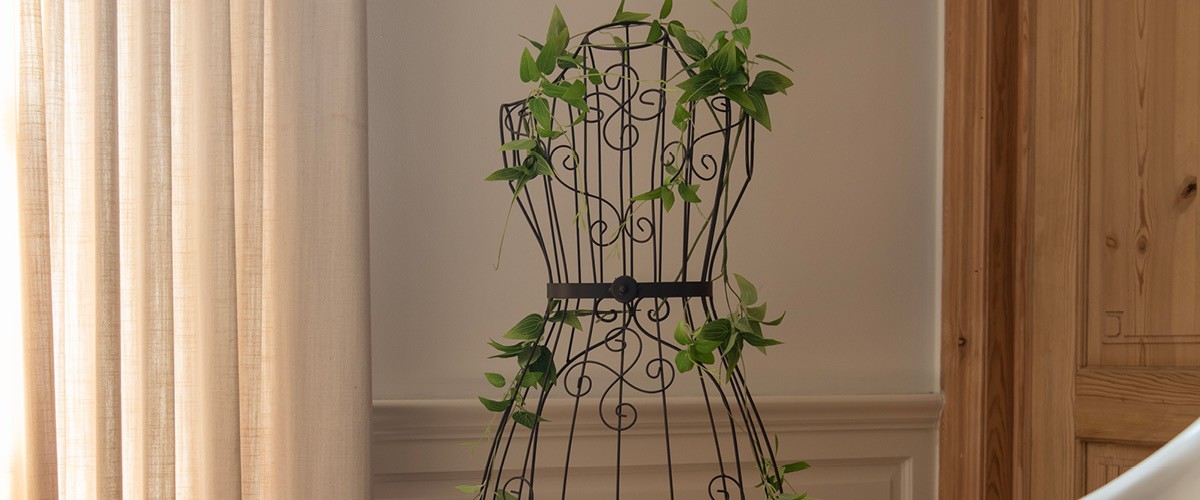 Mannequins and valet stands
Mannequins and valet stands
 Bath mats and bath rugs
Bath mats and bath rugs
 Medicine cabinets
Medicine cabinets
 Perfume bottles
Perfume bottles
 Tissue box covers
Tissue box covers
 Toilet roll & brush holders
Toilet roll & brush holders
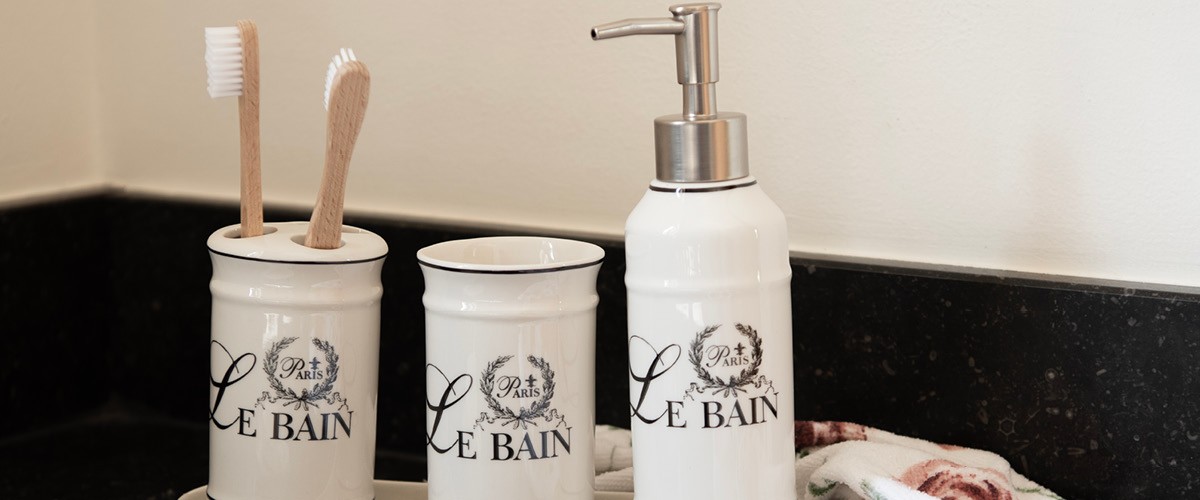 Soap dishes and bathroom accessories
Soap dishes and bathroom accessories
 Garden accessories
Garden accessories
 Animal accessories
Animal accessories
 Garden furniture
Garden furniture
 Watering cans and buckets
Watering cans and buckets
 Plant holders
Plant holders
 Trellises and garden obelisks
Trellises and garden obelisks
 Garden decorations
Garden decorations
 Dog beds and cat beds
Dog beds and cat beds
 Dog and Cat Feeding bowls
Dog and Cat Feeding bowls
 Bird feeders
Bird feeders
 Bird cages and bird houses
Bird cages and bird houses
 Bistro sets
Bistro sets
 Garden benches
Garden benches
 Garden chairs
Garden chairs
 Outdoor Tables
Outdoor Tables
 Hats and sun visors
Hats and sun visors
 Winter hats and ear muffs
Winter hats and ear muffs
 Scarves
Scarves
 Socks
Socks
 Bags
Bags
 Purses
Purses
 Umbrellas
Umbrellas
 Jewellery
Jewellery
 Accessories
Accessories
 Children's fashion
Children's fashion
 Holiday Supplies
Holiday Supplies
 Kids' scarves
Kids' scarves
 Scarves
Scarves
 Winter scarves
Winter scarves
 Handbags
Handbags
 Toiletry bags
Toiletry bags
 Backpacks
Backpacks
 Beach bags
Beach bags
 Wallets
Wallets
 Brooches
Brooches
 Jewellery boxes and jewellery holders
Jewellery boxes and jewellery holders
 Crowns
Crowns
 Hair accessories
Hair accessories
 Gloves
Gloves
 Make-up mirrors
Make-up mirrors
 Keychains
Keychains
 Halloween
Halloween
 Christmas decorations
Christmas decorations
 Easter decoration
Easter decoration


